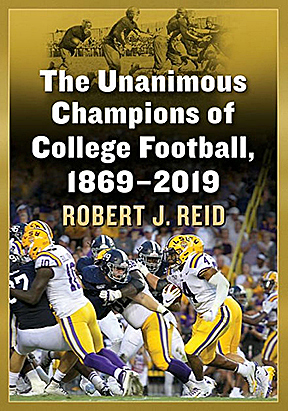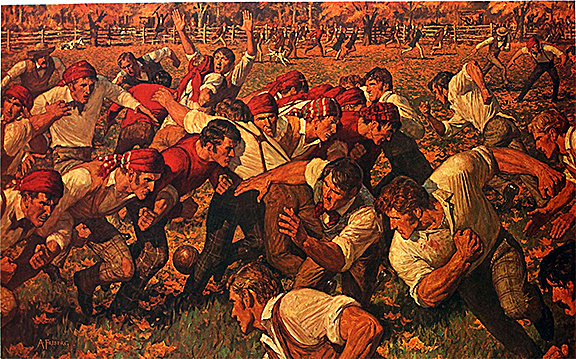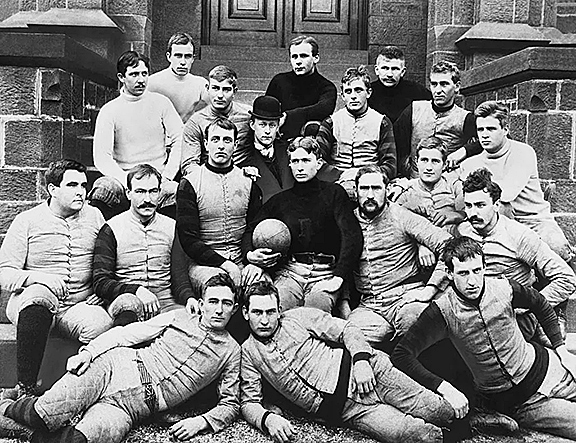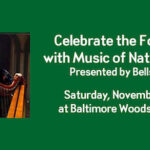The Unanimous Champions of College Football, 1869-2019 by Robert J. Reid
More than once, wandering through this incredibly rich volume, I paused, looked up, and thought: “He’s actually writing this in a way I can understand!”  And that may be the very best testimonial I can give to Robert Reid’s dedicated exploration of a question he posed himself way back in 2005 when he first began to write: “Why were so few teams, in the history of the sport, unanimously chosen as the national champion college team?” He acknowledges that in part, it was because it took years for a national championship format to be established. “During the 150 years in question, what were the major criteria necessary for a team to be a unanimous national champion?” Was there a single criteria that would easily result in a unanimous selection, or perhaps a set of them?
And that may be the very best testimonial I can give to Robert Reid’s dedicated exploration of a question he posed himself way back in 2005 when he first began to write: “Why were so few teams, in the history of the sport, unanimously chosen as the national champion college team?” He acknowledges that in part, it was because it took years for a national championship format to be established. “During the 150 years in question, what were the major criteria necessary for a team to be a unanimous national champion?” Was there a single criteria that would easily result in a unanimous selection, or perhaps a set of them?
He reminds us that in 150 years, the sport has evolved both with “a snail’s crawl and a cheetah’s speed.” Rules were changing and the style of play was constantly adjusting, and the various selectors may have relied upon more or less sophisticated mathematical analyses, as well as a combination of observation and research. Still, he delves deeply into the question: why, in the 150 years of college ball under consideration, were only 33 teams unanimously voted “the national champions?”
It’s clear that Reid enjoyed walking around his subject and observing it from a number of viewpoints, and that he has a talent for statistics.
“If a football program was selected the number one team in a certain number of seasons (say 10 seasons, 10 percent of the time period), that program could be considered one of the dominant football programs. This approach would reduce the field to eight schools…”
“Through the 89 seasons where the various selectors have failed to agree unanimously during the 1900s, there has been a single dissenting vote 16 times. Six of those 16 seasons have been the result of the selector not making a decision and voting for the predominant selection and another team.”
Geographic area, war years, observation versus statistical analysis, change of selectors, change in playoffs – there are so many factors to consider it boggles the mind of an unsophisticated reader such as myself how Reid undertook such a daunting project. And I’ll be honest, I always thought (from my perch outside the sports arena) that baseball was the sport of intricate number-crunching and analysis. I’ve heard fans arguing often enough to be amazed at the sheer volume of detail. I was proven mistaken with this book – it appears to me that sports, any sport, requires at least a passing love of statistical analysis.
Football fans, particularly college football fans, will be delighted with this book, as Reid leaves no stone unturned in his quest to understand and assess the unanimous champs.

His first chapter acquaints us with polling and the mathematical selection systems, and the next addresses times when seemingly obvious choices were not unanimous selections. The third chapter wraps up the early years (from 1869-1899) when football was dominated by The Ivy League, and even the terminology would be unfamiliar to today’s fan: “players were divided into ‘bulldogs’ and ‘fielders…’” and one team “’bucked’ the ball off a ‘tee’ composed of soil from the field.” (Oh, and by the way, Yale dominated the field.)
Starting in 1900 (Yale again), Reid cites, chapter by chapter in chronological order, those years when a national champion could be determined, and at the end of each chapter provides the “Why” of that year’s selection.
The book contains fascinating highlights of the sport, its evolution and lore, along with a statistician’s wealth of charts, comparing such numbers as wins, losses and ties; player, yards, and yards per carry; strength of schedule; opponents in the top ten and weeks in the top ten – and much, much more. Wonderful historic photos enrich the data and analysis, as well as a rich set of Appendices with details on Walter Camp, Awards and Coaches, the Frances Gordon Brown Letters, and more.
With football season just getting under way, this book would be a treasure for any fan wanting to enrich his or her knowledge, find fodder for argumentation, or just enjoy the exploration and history.











